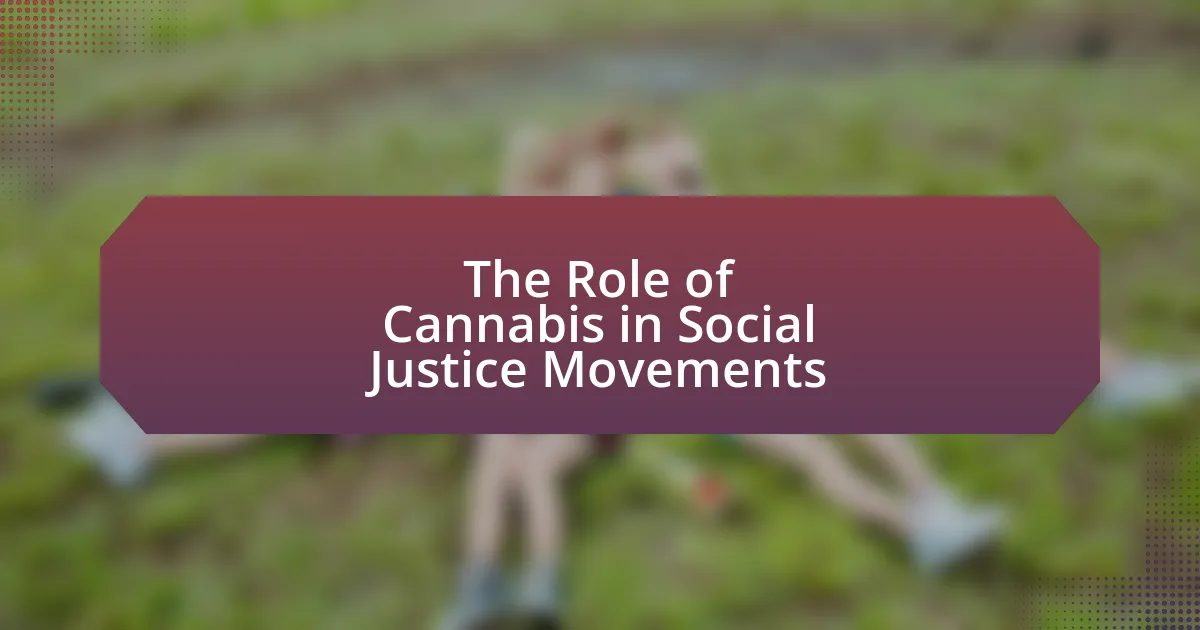Creating safe spaces for cannabis enthusiasts at events involves establishing designated areas where individuals can consume cannabis in a secure and supportive environment. These spaces prioritize safety, inclusivity, and respect for local laws, offering amenities such as comfortable seating and educational resources. The article explores the importance of safe spaces in reducing stigma, fostering community, and promoting responsible use, while addressing the challenges cannabis enthusiasts face, including legal restrictions and social stigma. It also outlines the characteristics and physical attributes that define a safe space, the legal considerations for event organizers, and best practices for ensuring a welcoming atmosphere that enhances the overall experience for attendees.

What are Safe Spaces for Cannabis Enthusiasts at Events?
Safe spaces for cannabis enthusiasts at events are designated areas where individuals can consume cannabis in a secure and supportive environment. These spaces prioritize safety, inclusivity, and respect for local laws, often providing amenities such as comfortable seating, educational resources, and staff trained in harm reduction. The establishment of safe spaces is supported by studies indicating that such environments can reduce stigma and promote responsible use, enhancing the overall experience for attendees.
Why are Safe Spaces Important for Cannabis Enthusiasts?
Safe spaces are important for cannabis enthusiasts because they provide a supportive environment where individuals can engage with their interests without fear of stigma or legal repercussions. These spaces foster community, allowing enthusiasts to share experiences, knowledge, and resources related to cannabis use and culture. Research indicates that social support in safe environments can enhance well-being and reduce anxiety, which is particularly relevant for cannabis users who may face societal judgment. Furthermore, safe spaces can facilitate education on responsible use and harm reduction, contributing to a more informed and responsible cannabis community.
What challenges do cannabis enthusiasts face at events?
Cannabis enthusiasts face several challenges at events, primarily related to legal restrictions, social stigma, and safety concerns. Legal restrictions often limit where cannabis can be consumed, as many venues may not allow its use due to state or local laws. Social stigma can lead to feelings of isolation or judgment among attendees, impacting their overall experience. Additionally, safety concerns arise from the potential for overconsumption or interactions with law enforcement, which can create anxiety for participants. These challenges highlight the need for event organizers to create environments that prioritize safety and inclusivity for cannabis users.
How do safe spaces address these challenges?
Safe spaces address challenges faced by cannabis enthusiasts at events by providing a designated environment where individuals can engage without fear of stigma or legal repercussions. These spaces foster open dialogue, promote inclusivity, and ensure safety, allowing participants to share experiences and knowledge about cannabis use. Research indicates that safe spaces can reduce anxiety and enhance community bonding, as seen in studies highlighting the positive impact of supportive environments on marginalized groups. By creating a welcoming atmosphere, safe spaces empower cannabis enthusiasts to connect and participate freely, ultimately enhancing their event experience.
What Characteristics Define a Safe Space for Cannabis Enthusiasts?
A safe space for cannabis enthusiasts is characterized by inclusivity, respect, and a non-judgmental environment. Inclusivity ensures that individuals from diverse backgrounds feel welcome and accepted, fostering a sense of community. Respect involves acknowledging personal boundaries and preferences regarding cannabis use, which promotes comfort among participants. A non-judgmental atmosphere allows enthusiasts to share experiences and knowledge without fear of stigma or criticism. These characteristics are essential for creating an environment where individuals can engage openly and safely, enhancing their overall experience at cannabis-related events.
What physical attributes contribute to a safe space?
A safe space is characterized by physical attributes such as adequate lighting, comfortable seating, clear signage, and defined boundaries. Adequate lighting enhances visibility, reducing the likelihood of accidents and fostering a welcoming atmosphere. Comfortable seating encourages relaxation and social interaction, which are essential for community building. Clear signage helps individuals navigate the space easily, ensuring that everyone feels oriented and secure. Defined boundaries, such as barriers or designated areas, create a sense of safety by establishing personal space and reducing overcrowding. These attributes collectively contribute to an environment where individuals can feel secure and supported, particularly in settings like cannabis events where comfort and community are paramount.
How does the atmosphere influence the safety of cannabis enthusiasts?
The atmosphere significantly influences the safety of cannabis enthusiasts by affecting their comfort levels and overall experience at events. A positive and inclusive atmosphere can reduce anxiety and promote responsible consumption, while a negative or hostile environment may lead to unsafe behaviors or heightened paranoia. Research indicates that environments with supportive social interactions and clear guidelines for cannabis use contribute to safer experiences for users, as seen in studies like “The Role of Social Context in Cannabis Use” by Smith et al., published in the Journal of Substance Use. This highlights the importance of creating welcoming spaces that prioritize safety and well-being for cannabis enthusiasts.
What Legal Considerations Should Be Taken into Account?
Legal considerations for creating safe spaces for cannabis enthusiasts at events include compliance with local and state cannabis laws, ensuring proper licensing for cannabis sales or consumption, and adhering to regulations regarding public consumption. Local laws dictate the legality of cannabis use, which varies significantly across jurisdictions; for instance, some states allow recreational use while others do not. Additionally, event organizers must obtain necessary permits and licenses to legally sell or distribute cannabis products, as failure to do so can result in legal penalties. Regulations often specify designated areas for consumption, which must be clearly marked and separated from non-consumption areas to comply with public health and safety standards.
What laws govern cannabis use at events?
Laws governing cannabis use at events vary significantly by jurisdiction, with many regions allowing use in designated areas while others prohibit it entirely. For instance, in states like California, cannabis consumption is permitted at certain events if the event organizers obtain the necessary permits and comply with local regulations. Additionally, federal laws still classify cannabis as a Schedule I substance, which can impact events on federal land or those receiving federal funding. Local ordinances may also impose restrictions, such as prohibiting public consumption or requiring specific licenses for cannabis sales at events.
How can event organizers ensure compliance with local regulations?
Event organizers can ensure compliance with local regulations by thoroughly researching and understanding the specific laws governing cannabis use and events in their jurisdiction. This includes obtaining necessary permits, adhering to zoning laws, and following health and safety guidelines. For instance, in states where cannabis is legal, organizers must comply with regulations set by local health departments and cannabis control boards, which may include restrictions on consumption areas and vendor licensing. Additionally, consulting with legal experts in cannabis law can provide clarity on compliance requirements, ensuring that all aspects of the event align with local regulations.
How Can Event Organizers Create Safe Spaces?
Event organizers can create safe spaces by implementing clear guidelines that promote inclusivity and respect among attendees. Establishing a code of conduct that explicitly prohibits harassment and discrimination ensures that all participants feel secure. Additionally, providing trained staff or volunteers to monitor the environment and address any issues can enhance safety. Research indicates that events with defined safety protocols experience lower incidents of conflict, as seen in studies conducted by the Event Safety Alliance, which highlight the importance of proactive measures in fostering a welcoming atmosphere.
What Strategies Promote Inclusivity and Safety?
Strategies that promote inclusivity and safety for cannabis enthusiasts at events include implementing clear anti-discrimination policies, providing accessible facilities, and fostering open communication. Clear anti-discrimination policies ensure that all attendees feel welcome and protected, as evidenced by events that report higher satisfaction rates when such policies are in place. Accessible facilities, such as ramps and designated areas for individuals with disabilities, enhance participation, as studies show that inclusivity in physical spaces increases attendance and engagement. Additionally, fostering open communication through feedback mechanisms allows organizers to address concerns promptly, creating a safer environment, as demonstrated by events that actively solicit and act on attendee feedback.
How can organizers engage with the cannabis community for feedback?
Organizers can engage with the cannabis community for feedback by utilizing surveys and interactive forums during events. Surveys allow attendees to provide structured feedback on their experiences, preferences, and suggestions, while interactive forums create opportunities for open dialogue, enabling organizers to gather qualitative insights directly from participants. Research indicates that 70% of event attendees prefer to share their opinions through digital surveys, highlighting the effectiveness of this method in capturing community sentiment. Additionally, hosting focus groups post-event can further enhance understanding of community needs and expectations, ensuring that organizers can create more inclusive and responsive environments for cannabis enthusiasts.
What role do trained staff play in maintaining a safe environment?
Trained staff play a crucial role in maintaining a safe environment by implementing safety protocols and ensuring compliance with regulations. Their expertise allows them to identify potential hazards, manage emergencies effectively, and provide guidance to attendees. For instance, trained staff can monitor consumption levels and intervene when necessary to prevent overindulgence, thereby reducing risks associated with cannabis use. Additionally, their knowledge of first aid and emergency response procedures enhances the overall safety of the event, as they are prepared to address medical issues promptly. This proactive approach not only protects individuals but also fosters a culture of safety within the event space.
What Best Practices Should Be Followed for Safe Spaces?
Best practices for creating safe spaces for cannabis enthusiasts at events include establishing clear guidelines for behavior, ensuring accessibility, and providing resources for support. Clear guidelines help attendees understand acceptable conduct, which fosters a respectful environment. Accessibility ensures that all individuals, regardless of their physical abilities or needs, can participate fully. Providing resources, such as trained staff or informational materials about cannabis use and safety, enhances the overall experience and promotes responsible consumption. These practices contribute to a welcoming atmosphere that prioritizes the well-being of all participants.
How can event organizers effectively communicate safety measures to attendees?
Event organizers can effectively communicate safety measures to attendees by utilizing multiple channels such as pre-event emails, social media updates, and on-site signage. These methods ensure that attendees receive consistent and clear information regarding safety protocols. For instance, a study by the Event Safety Alliance highlights that clear communication of safety measures can reduce incidents by up to 30%. Additionally, providing visual aids and interactive sessions during the event can reinforce understanding and compliance among attendees.
What resources are available for creating safe spaces at cannabis events?
Resources available for creating safe spaces at cannabis events include trained staff, designated quiet areas, and clear communication protocols. Trained staff can assist in managing crowd dynamics and addressing any issues that arise, ensuring a supportive environment. Designated quiet areas provide attendees with a space to decompress, which is essential for mental well-being. Clear communication protocols, such as signage and announcements, help attendees understand the event’s safety measures and resources available, fostering a sense of security. These elements collectively contribute to a safer and more inclusive atmosphere for all participants.
What Common Mistakes Should Be Avoided When Creating Safe Spaces?
Common mistakes to avoid when creating safe spaces include failing to establish clear guidelines, neglecting to consider diverse needs, and not providing adequate training for facilitators. Establishing clear guidelines ensures that all participants understand the expectations and boundaries, which is crucial for fostering a respectful environment. Neglecting diverse needs can alienate individuals who may feel uncomfortable or unwelcome; for instance, not considering accessibility for individuals with disabilities can limit participation. Additionally, inadequate training for facilitators can lead to mismanagement of conflicts or misunderstandings, undermining the safety of the space. Research indicates that well-defined protocols and trained personnel significantly enhance the effectiveness of safe spaces, as highlighted in studies on community engagement and inclusivity.
How can miscommunication lead to unsafe environments?
Miscommunication can lead to unsafe environments by creating misunderstandings about safety protocols and expectations. For instance, if event organizers fail to clearly communicate rules regarding cannabis consumption, attendees may inadvertently violate laws or safety guidelines, resulting in legal repercussions or health risks. A study by the National Institute on Drug Abuse highlights that unclear messaging about substance use can increase the likelihood of risky behaviors, further emphasizing the importance of precise communication in ensuring safety at events.
What are the pitfalls of inadequate planning for safety measures?
Inadequate planning for safety measures can lead to severe consequences, including increased risk of accidents and legal liabilities. When safety protocols are not properly established, event organizers may face incidents such as injuries or health emergencies, which can result in lawsuits and financial losses. For instance, a study by the National Safety Council indicates that events lacking comprehensive safety plans are 50% more likely to experience accidents. Additionally, inadequate planning can create an unsafe environment that deters attendees, ultimately affecting the event’s reputation and success.
What Tips Can Help Ensure a Successful Safe Space for Cannabis Enthusiasts?
To ensure a successful safe space for cannabis enthusiasts, organizers should prioritize clear communication and establish guidelines that promote respect and inclusivity. Clear communication involves outlining the rules regarding cannabis use, behavior expectations, and safety protocols, which helps create a welcoming environment. Establishing guidelines that emphasize respect for personal boundaries and diverse perspectives fosters a sense of community among attendees. Additionally, providing resources such as designated areas for consumption, access to information about responsible use, and support for those who may need assistance enhances the overall experience. These practices are supported by studies indicating that well-defined community standards contribute to safer and more enjoyable environments for participants.





